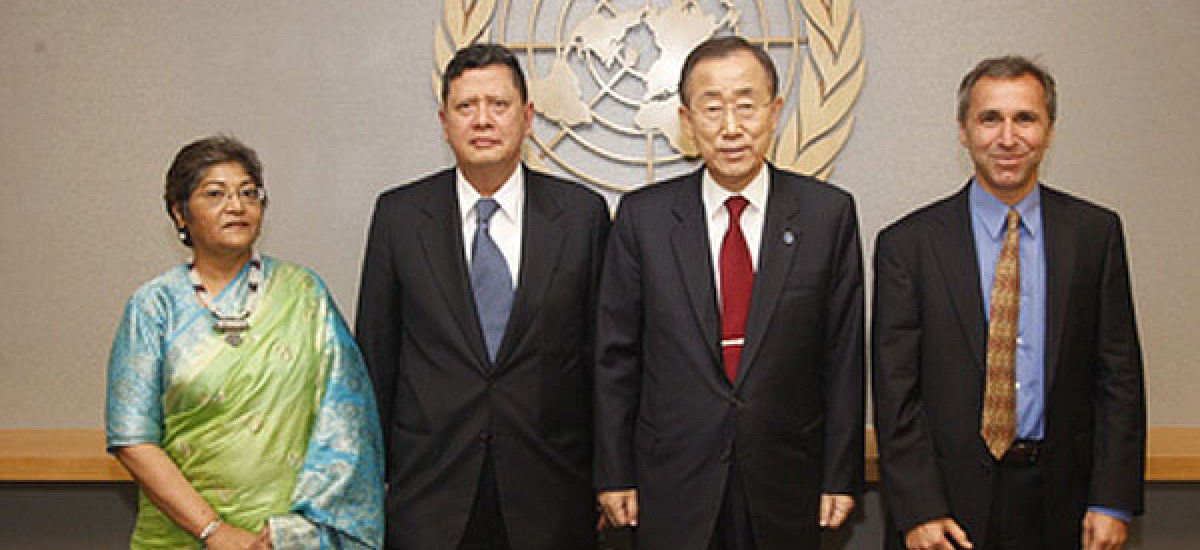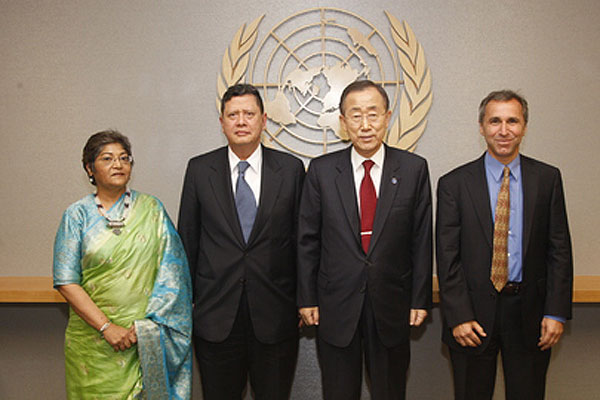The Island newspaper continues to publish leaks from the report produced by the Panel appointed by the UN Secretary General to look into post-war accountability in Sri Lanka. Groundviews has covered in detail the Executive Summary and Parts 1 and 2 of the leaks. The Island published today Part 3, which focusses on the shelling of hospitals.
As before, we provide context and background information to frame these highlights. Please be warned that some of the following highlights are graphic in their descriptions, and make for difficult reading.
“Throughout the final stages of the war, virtually every hospital in the Vanni, whether permanent or makeshift, was hit by artillery. ”
“PTK hospital was packed with hundreds of injured civilians from the NFZ. More than 100 new patients were arriving each day, many from the NFZ. Many had severe or life-threatening injuries caused by artillery fire or burns. The casualties, many of them babies, young children and the elderly, were packed in every conceivable space – on beds, under tables, in hallways and outside in the driveway.”
“… in the week between 29 January and 4 February, PTK hospital was hit every day by MBRLs and other artillery, taking at least nine direct hits. A number of patients inside the hospital, most of them already injured, were killed, as were several staff members. Even the operating theatre was hit. Two ICRC international delegates were in the hospital when it was shelled on 4 February 2009. The shelling was coming from SLA positions.”
“The LTTE also fired mobile artillery from the vicinity of the hospital, but did not use the hospital for military purposes until after it was evacuated. Yet, in its eagerness to capture the area, the SLA repeatedly shelled the hospital and surrounding areas.”
“As the Government did not allow basic medical supplies into the Vanni, conditions in Putumattalan hospital were so poor that a large number of amputations were performed without anesthetic, using butcher knives rather than scalpels. Sanitary pads and cotton cloths were used as bandages, and intravenous drips were hung from the trees, with the severely-injured patients lying on the ground under them.”
“Some of the patients, including those with serious head injuries and other obvious fatal injuries, were merely made comfortable, but no attempt could be made to save them. With few beds available, wounded patients often remained in front of the hospital, some on mats and others lying on dust and gravel, under sheets set up for shelter, cradled by their loved ones or alone. With a severe shortage of gauze or other sterile bandages, old clothes or saris were used as bandages. No gloves were available, and the conditions were grossly unhygienic, giving rise to a high risk of infections. In this hospital, amputations were also performed with butcher knives, due to the lack of surgical equipment, and amputated limbs were collected in piles. On many occasions amputations were performed to save the life of the patient, as there was simply no other way to treat wounds. Due to the severe shortage of anesthetics, the little that remained was mixed with distilled water, but many amputations were performed without anesthesia. In spite of widespread malnutrition, some people continued to donate blood, but a general shortage of blood meant that a patient’s own blood was often used, caught in a plastic bag, to be filtered through a cloth and re-transfused back into the same patient.”
“In spite of many desperate telephone calls by the AGA and doctors to stop the shelling to allow them to ahttp://groundviews.org/wp-admin/post-new.phpttend to the wounded and dead, no reprieve was forthcoming from the SLA. After 14 May 2009, the doctors could no longer go to the hospital due to the intensity of the shelling, and it had to be closed. Dozens of patients who could not be moved were left behind. All survivors huddled together in rudimentary shelters. Cooking was impossible and leaving the shelter even for sanitary purposes meant risking one’s life. Some civilians tried to stage a mass breakout, but were shot at and shelled by the LTTE. Those who managed to escape were helped across by individual SLA soldiers.”


